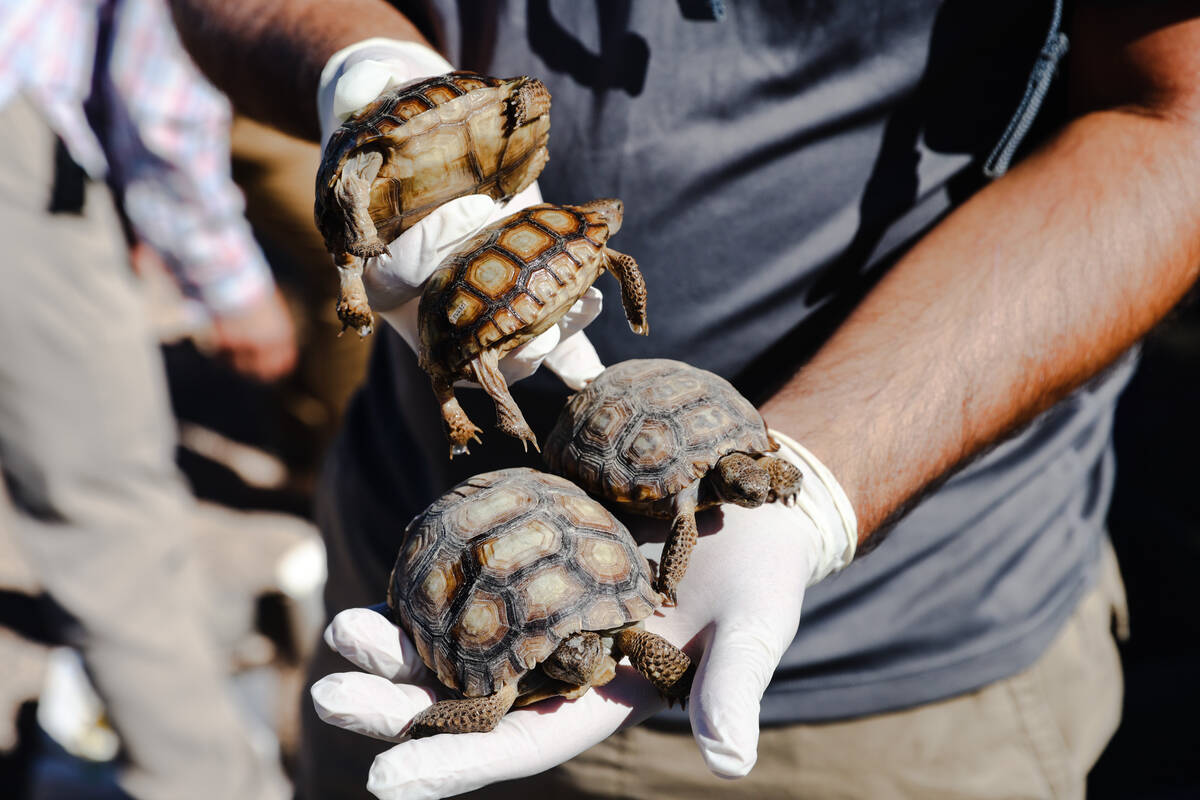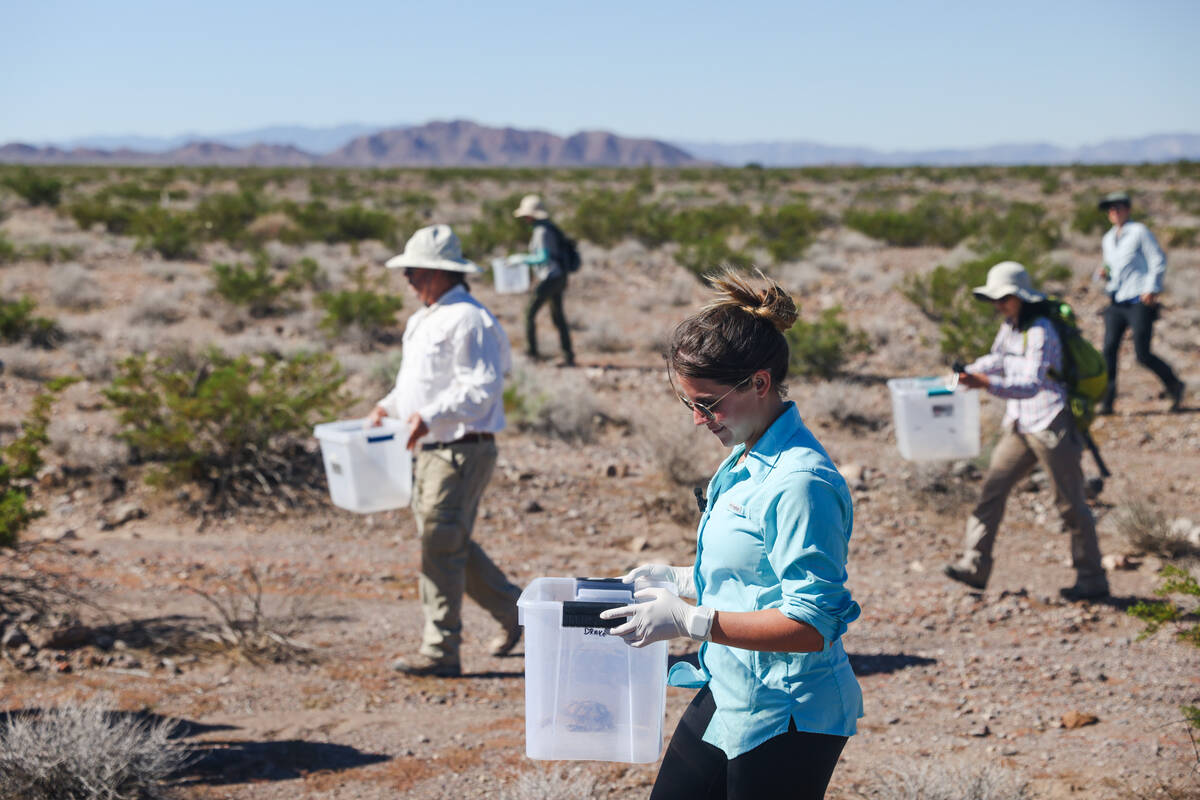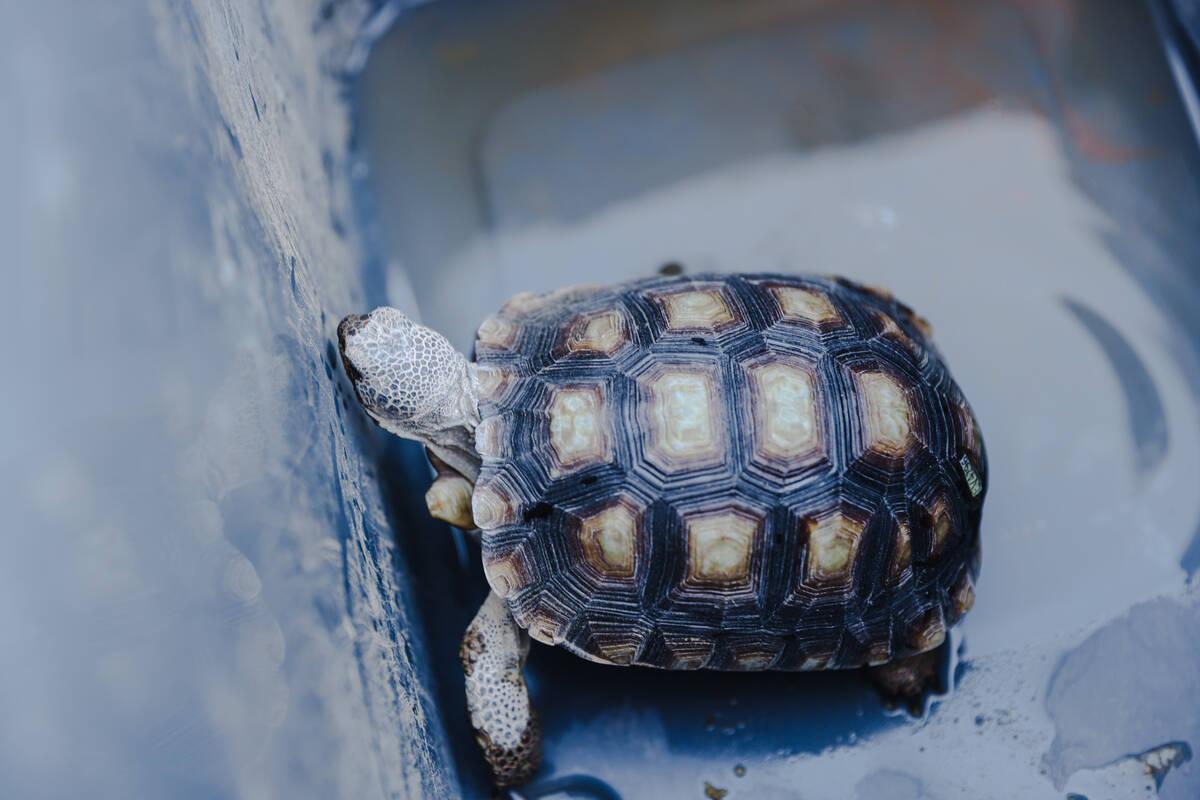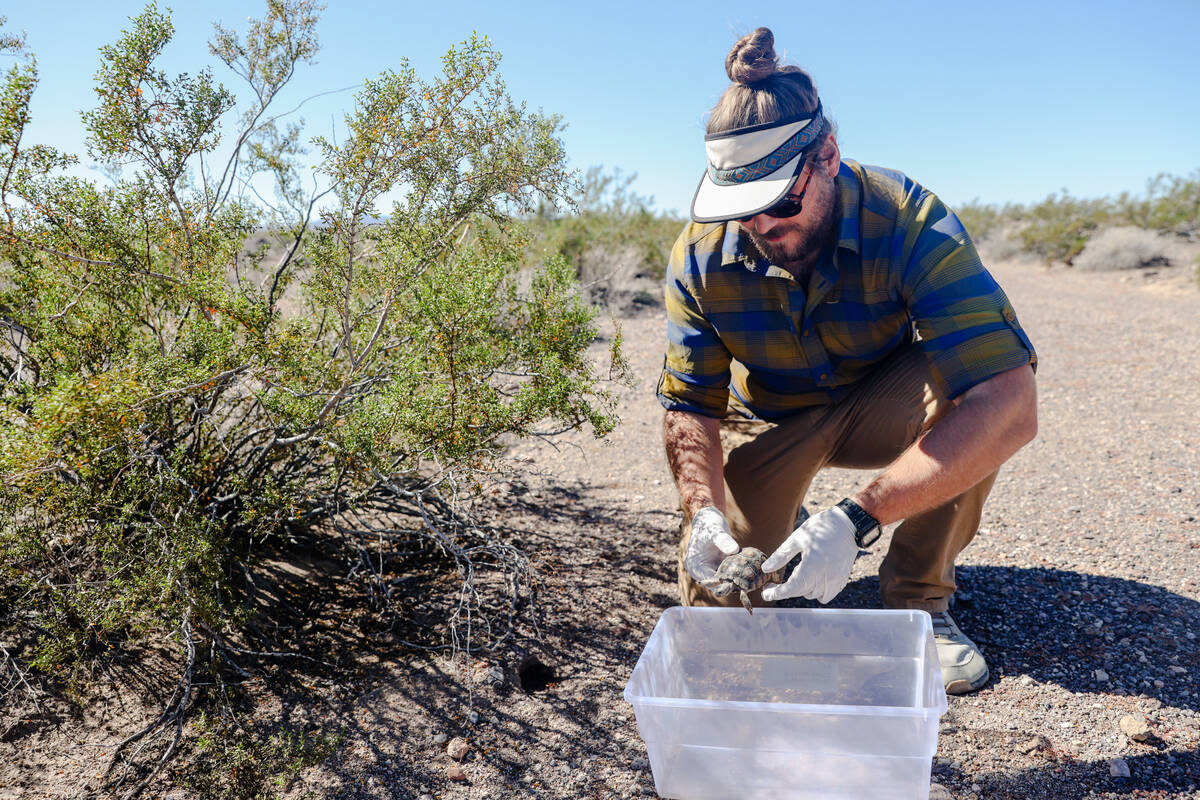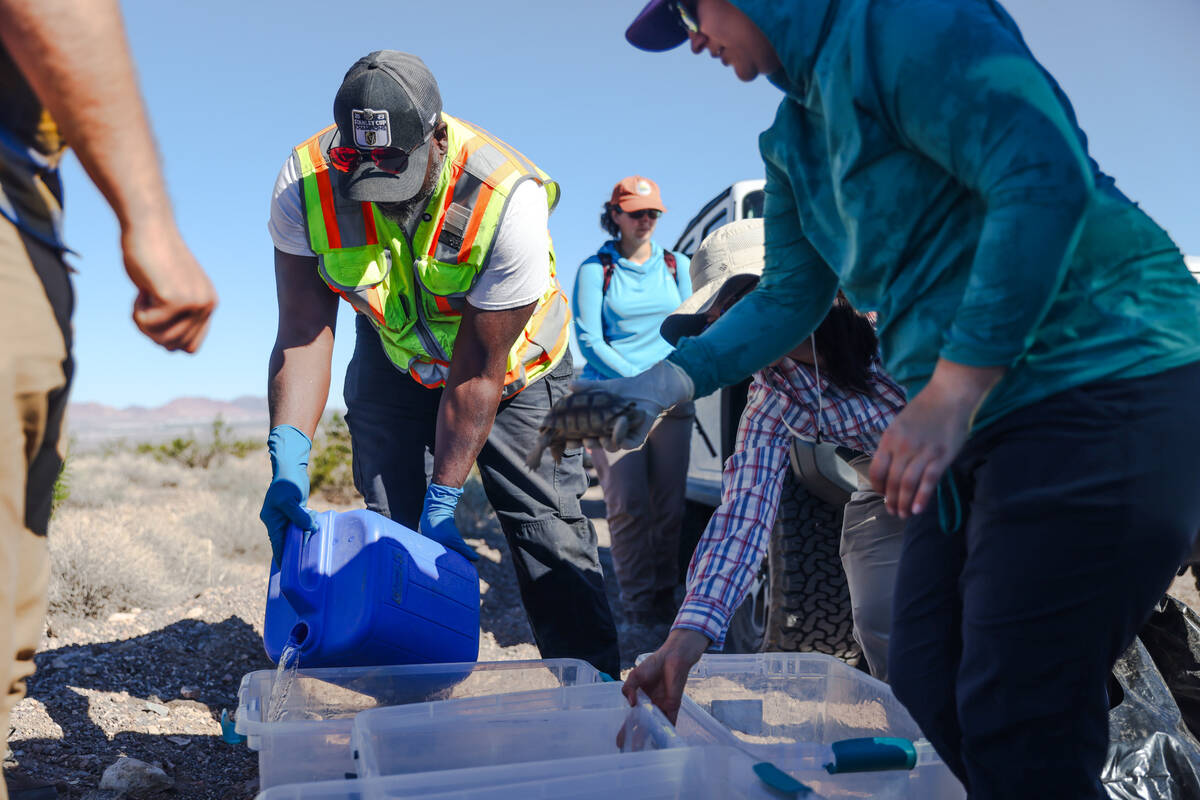Biologists release dozens of desert tortoises into the wild
Before they could find their new homes in the Southern Nevada desert, they first had to take a bath.
No, this wasn’t some new hoop that prospective homebuyers have to jump through in Las Vegas’ housing market. For the 51 desert tortoises released into the wild Wednesday south of Boulder City, it was a step to make sure the desert-dwelling reptiles have enough water in their system as they make their way out into their new habitat.
“It’s always a great day. You get to get out, you get to see tortoises, you know you’re doing a good thing for the animals and for the species in general,” said Scott Cambrin, senior biologist with Clark County’s Desert Conservation Program. “So it’s definitely better than sitting behind a desk.”
Cambrin helped lead a team consisting of staff members from the conservation program along with more than a dozen volunteer biologists out into the desert to release the tortoises into the Boulder City Conservation Easement, an 87,268-acre swath of public land established in 1995 to conserve habitat for the federally protected species.
The desert tortoise has been listed as threatened under the Endangered Species Act since 1990, but its numbers have continued to dwindle across much of its range since then. From 2004 to 2014, the number of adult tortoises in some areas dropped by more than 50 percent, according to the U.S. Fish and Wildlife Service.
The volunteer biologists, each carrying one or more tortoises, fanned out across designated areas within the easement where the tortoise numbers have fallen below what they consider a sustainable population, according to Cambrin.
One by one, the biologists trekked through the rocky landscape on the hunt for prime tortoise habitat — a big, shady creosote bush with tasty tiny desert wildflowers nearby, or if they were lucky, a rodent burrow big enough for a young tortoise to call its future home.
Many of the volunteers taking part in Wednesday’s release work as environmental consultants, often doing survey assessments for major construction projects where companies need to ensure that any desert tortoises that may be on the project site are safely removed.
That included Robert Smith, who works as an independent contractor doing desert tortoise survey work and monitoring for construction sites.
Helping to relocate tortoises helps biologists like Smith accrue time handling wild tortoises, which the U.S. Fish and Wildlife Service requires before it will qualify someone as an “authorized biologist,” or a supervisor who can actually handle the reptiles on construction sites and other jobs.
Smith, 42, has been working with tortoises for more than three years, but Wednesday was his first time on a relocation project. He said it’s difficult to call what he does now a job, but it is one that has turned out to be the “most well-paying job I’ve ever had, both financially and emotionally.”
“It’s so far from being a job, rather than a hobby and just an experience in nature,” Smith said.
Some of the tortoises were on the younger side for a species that can live up to 80 years, but Cambrin said they are old enough that their shells can withstand the beak of a raven, one of the main predators in the area for the tortoises.
Releases such as the one that took place Wednesday happen a few times a year, often in May and October, which typically bring about the air temperatures and conditions required for such releases, Cambrin said.
Cambrin said it’s difficult to say just how much the release of the few dozen tortoises will help the area’s overall population because so many of them are still years away from reaching sexual maturity.
But as long as a portion of them survive and reach reproduction age, Cambrin said, “then they can help sustain that population going forward.”
Contact Colton Lochhead at clochhead@reviewjournal.com.



